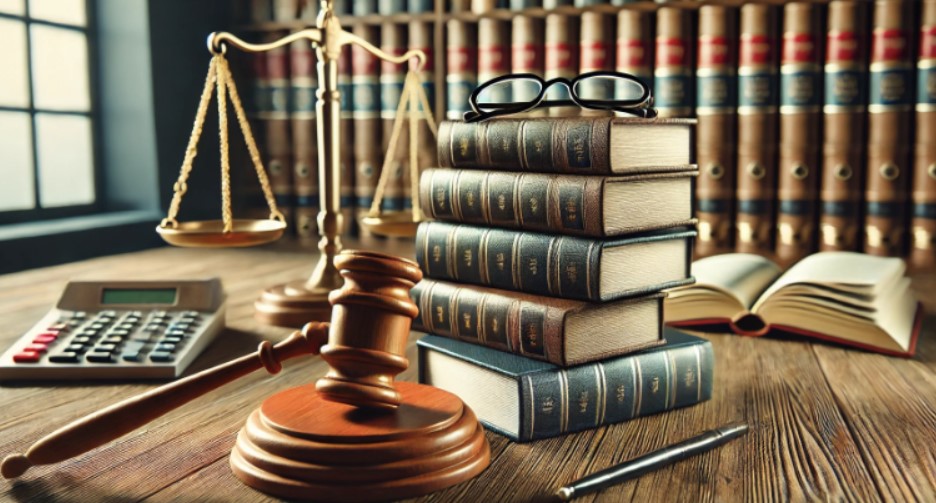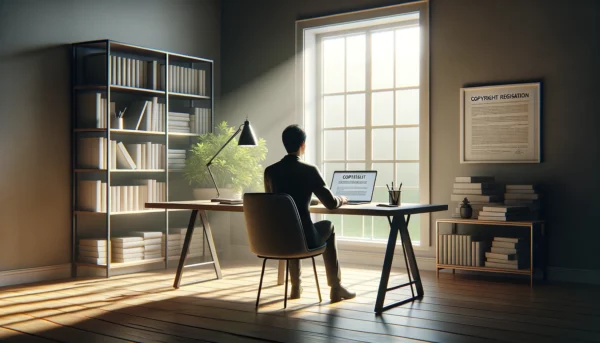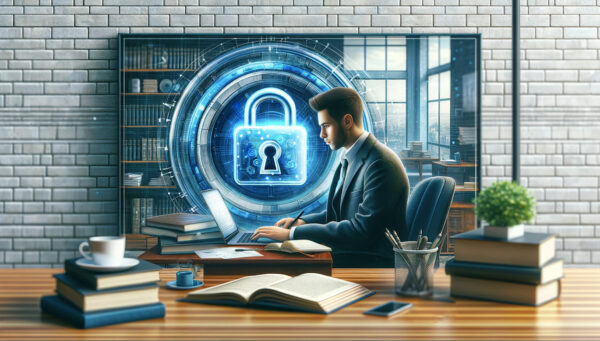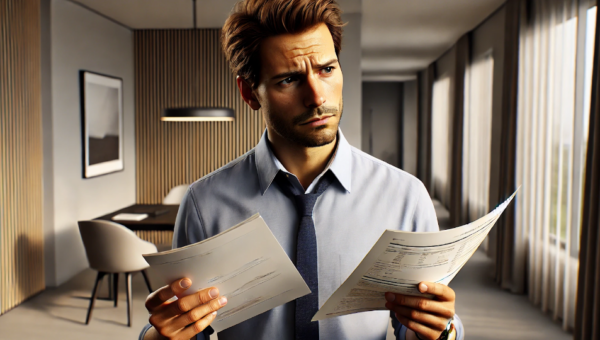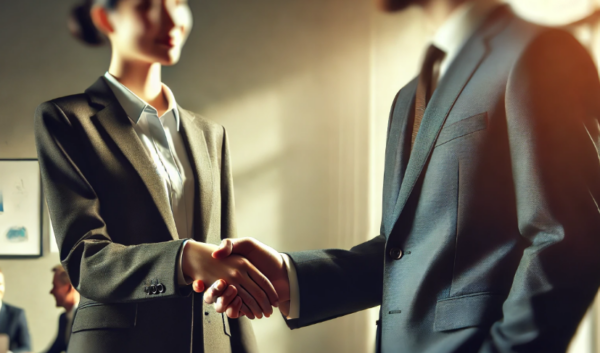Copyright is a legal framework that grants creators of original works exclusive rights to their creations. This protection covers literary works, music, art, and more, ensuring that authors, musicians, and artists can control and profit from their intellectual property. In the context of books, copyright safeguards the author’s rights to reproduce, distribute, perform, display, and create derivative works based on their original content.
In recent years, there has been a noticeable increase in book copyright infringement cases, fueled by the rise of digital platforms and easy access to copying and distributing materials without permission. This trend has significant implications for authors and copyright owners, as it undermines their control over their work and can lead to financial losses and diminished market value.
Understanding the steps to take if someone infringes on your book’s copyright is crucial for protecting your rights and maintaining the integrity of your work. Authors and copyright owners must be aware of the legal avenues available to them, including gathering evidence, contacting the infringer, and potentially pursuing legal action. By being proactive and informed, authors and copyright owners can effectively address infringement issues and safeguard their creative endeavors.
Exploring Copyright Law
Copyright law is a fundamental component of intellectual property rights, designed to protect the creative works of individuals by granting them exclusive rights over their creations. The primary purpose of copyright law is to encourage the creation of original works by providing creators with the legal means to control how their works are used and to receive compensation for their use. This legal framework ensures that authors, artists, and other creators can benefit financially from their labor, which in turn promotes cultural and intellectual development.
The cornerstone of copyright law in the United States is the Copyright Act of 1976, which outlines the rights and protections afforded to authors of “original works of authorship.” This act applies to various forms of creative expression, including literary works, which encompass novels, poems, essays, and other written content. The Copyright Act provides a detailed structure for the registration, protection, and enforcement of copyright, ensuring that authors have a robust legal foundation to support their rights. The rights of authors and the right of publication and exploitation are closely related within this framework, emphasizing the interconnected nature of these protections.
Under the Copyright Act, copyright holders are granted several exclusive rights. These rights include:
- Reproduction: The right to make copies of the copyrighted work.
- Distribution: The right to distribute copies of the work to the public by sale, lease, or lending.
- Public Performance: The right to perform the work publicly, such as in a reading or play.
- Public Display: The right to display the work publicly, including on the internet.
- Derivative Works: The right to create adaptations or derivative works based on the original, such as a movie adaptation of a book.
- Digital Transmission: The right to transmit the work digitally, particularly relevant in the age of e-books and online publications.
These exclusive rights ensure that the copyright holder can control and monetize their creative output, making copyright law a vital tool for protecting and rewarding creative endeavors. Understanding these rights and how they apply to literary works is essential for authors seeking to protect their books from infringement and unauthorized use.
What is Book Copyright Infringement?
Book copyright infringement occurs when someone uses a copyrighted book or any substantial part of it without the permission of the copyright holder. This unauthorized use violates the exclusive rights granted to the author under copyright law, such as the rights to reproduce, distribute, perform, display, or create derivative works based on the original book. Essentially, copyright infringement undermines the author’s control over their work and can result in financial losses and damage to the work’s market value. The court found in several cases that unauthorized reproduction and distribution of copyrighted books constituted clear violations of copyright law.
Common examples of book copyright infringement include:
- Unauthorized Reproduction: Copying significant portions of a book and distributing them, whether in print or digitally, without the author’s consent.
- Plagiarism: Presenting parts of a copyrighted book as one’s own work, without crediting the original author.
- Unlicensed Translations: Translating a book into another language and distributing it without obtaining permission from the copyright holder.
- Unauthorized Adaptations: Creating and distributing derivative works, such as films, plays, or audiobooks, without the author’s approval.
- Illegal Sharing: Uploading a book to file-sharing websites or distributing it via email or other digital platforms without authorization.
To identify if your book’s copyright has been infringed, conduct online searches using excerpts from your book to find unauthorized reproductions, and pay attention to websites offering free downloads or suspiciously low-priced copies of your work.
If you suspect plagiarism, compare the content of other books or articles with your own to identify copied sections. Additionally, review permissions to ensure that all adaptations, translations, and reproductions of your book have been authorized. If you find any unauthorized versions, it may indicate infringement. By staying vigilant and proactively monitoring for unauthorized use, authors can protect their intellectual property and take appropriate action if infringement occurs.
Copyright Protection for Literary Works
Copyright protection is a critical mechanism that safeguards the intellectual property rights of authors, ensuring that their literary works are legally protected from unauthorized use. This protection is automatic from the moment an original work is created and fixed in a tangible form, such as written or electronic text. Copyright protection exists to ensure that authors have exclusive rights to control how their works are used and to benefit financially from their distribution.
To obtain copyright protection for a literary work, no formal registration is required in the United States, as copyright exists upon the creation of the work. However, registering the work with the U.S. Copyright Office provides significant advantages, including a public record of the copyright and the ability to file a lawsuit against infringers. The registration process involves submitting an application form, a copy of the work, and the required fee to the U.S. Copyright Office. This process can typically be completed online and serves as a valuable step in protecting an author’s rights.
Copyright grants authors several exclusive rights, including:
- Reproduction: The right to make copies of the work. This includes photocopying, scanning, or digitally reproducing the text.
- Distribution: The right to distribute copies of the work to the public through sale, rental, lease, or lending.
- Public Performance: The right to perform the work publicly. This applies to readings or dramatizations of the text.
- Public Display: The right to display the work publicly, such as excerpts in a gallery or online.
- Derivative Works: The right to create and authorize adaptations based on the original work, such as translations, film adaptations, or sequels.
- Digital Transmission: The right to transmit the work digitally, is crucial in the age of e-books and online publications.
These exclusive rights empower authors to control how their works are used and to take legal action against unauthorized uses. By understanding and leveraging these rights, authors can effectively protect their literary works and ensure they receive proper recognition and compensation for their creative efforts.
Steps to Take if Your Book’s Copyright is Infringed
If you discover that your book’s copyright has been infringed, taking prompt and decisive action is essential to protect your rights and seek appropriate remedies. Navigating legal issues in publishing can be trikcy, but we’ve got you covered!
Here are the key steps you should follow:
Before using any copyrighted material, it is crucial to obtain permission to avoid legal issues.
Gather Evidence of the Infringement
The first step in addressing copyright infringement is to gather comprehensive evidence. This includes:
- Documenting the Infringement: Take screenshots, print pages, or save digital copies of the infringing material. Ensure that the evidence clearly shows the unauthorized use of your work.
- Recording Dates and Locations: Note when and where you found the infringing content. This information will be crucial if you need to pursue legal action.
- Identifying the Infringer: Try to determine who is responsible for the infringement. This might involve identifying the website owner, the individual who posted the content, or the publisher.
Assess the Extent of the Infringement
After gathering evidence, assess the extent of the infringement to understand its impact. Consider the following:
- Scope and Scale: Determine how widely the infringing material has been distributed. Is it on a popular website or social media platform? Has it been shared or downloaded extensively?
- Financial Impact: Evaluate the potential financial loss resulting from the infringement. This includes lost sales, reduced market value, and potential damage to your reputation.
- Nature of the Infringement: Consider whether the infringement is blatant copying, unauthorized distribution, or adaptation of your work.
Contact the Infringer Directly to Resolve the Issue
In some cases, contacting the infringer directly can lead to a quick resolution. Here’s how to approach this step:
- Polite Communication: Reach out to the infringer via email or letter, clearly stating your concerns and providing evidence of the infringement.
- Request for Removal or Cessation: Politely ask them to remove the infringing content or cease the unauthorized activity. Often, individuals or small websites may not realize they are infringing and will comply voluntarily.
- Offer Solutions: Consider offering a licensing agreement or other legal means for them to use your work legitimately, if appropriate.
Send a Cease and Desist Letter
If direct contact fails to resolve the issue, the next step is to send a formal cease and desist letter. This letter serves as a legal warning and should include:
- Clear Identification: Clearly identify yourself and your work, providing evidence of your copyright ownership.
- Description of Infringement: Detail the specific instances of infringement and provide the evidence you have gathered.
- Legal Basis: Reference the relevant copyright laws that protect your work and explain how the infringement violates these laws.
- Demand for Action: Clearly state what you expect the infringer to do, such as removing the infringing content or ceasing distribution, and set a deadline for compliance.
- Potential Consequences: Mention potential legal actions you may take if they do not comply, such as seeking damages or an injunction.
A cease and desist letter often underscores the seriousness of the situation and prompts compliance. If the infringer does not respond or refuses to comply, you may need to consider further legal action, such as filing a lawsuit, to protect your rights and seek compensation.
Understanding Fair Use
Fair use is a crucial doctrine within copyright law that allows limited use of copyrighted material without obtaining permission from the copyright holder. The fair use doctrine is designed to balance the interests of creators in protecting their work and the public’s interest in accessing and using creative content for purposes such as education, commentary, and research. Fair use is vital because it ensures that copyright protection does not stifle creativity, innovation, and freedom of expression.
Factors Determining Fair Use
The determination of fair use is based on a case-by-case analysis of four key factors:
Purpose and Character of the Use: This factor examines whether the use is of a commercial nature or for nonprofit educational purposes. Uses that are transformative—meaning they add new expression, meaning, or message to the original work—are more likely to be considered fair use. Examples include commentary, criticism, or parody.
Nature of the Copyrighted Work: This factor considers the type of work being used. Uses involving factual works (like non-fiction or news reporting) are more likely to be considered fair use compared to uses involving highly creative works (like novels or plays).
Amount and Substantiality of the Portion Used: This factor looks at both the quantity and quality of the portion used in relation to the copyrighted work as a whole. Using a small, less significant part of the work may favor fair use, but even a small portion can be unfair if it constitutes the “heart” of the work.
Effect on the Market for the Original: This factor assesses whether the use harms the market value or potential market of the original work. If the use could replace the original work or reduce its sales, it is less likely to be considered fair use.
The fair use exception permits the use of copyrighted work for purposes such as news reporting, criticism, parody, scholarship, and research without authorization from the copyright owner.
Examples of Fair Use in Literary Works
1. Criticism and Commentary: A book review that quotes brief excerpts from a novel to support its critique would likely be considered fair use.
2. Parody: A humorous or satirical work that imitates a copyrighted book to comment on its style or themes may be protected under fair use.
3. Educational Use: An educator copying a small portion of a book for classroom discussion or for use in a scholarly article might be considered fair use.
4. News Reporting: A journalist quoting a passage from a book in a news article to illustrate a point or report on a trend can also be considered fair use.
Understanding fair use is essential for both authors and users of literary works, as it delineates the boundaries of lawful use and helps prevent infringement disputes.
Legal Actions for Copyright Infringement
When you believe your book’s copyright has been infringed and initial efforts to resolve the issue directly with the infringer have failed, it may be necessary to consider legal action. Taking legal steps to protect your rights can be a complex and daunting process, but it is often essential to prevent further unauthorized use and to seek compensation for damages.
Additionally, a person authorized by the copyright owner has the right to sell or dispose of a particular copy of a work, and under specific circumstances, making copies for private use may be legal.
When to Consider Legal Action
Consider legal action when the infringement has caused or could cause significant financial losses when the infringing material is being widely distributed and significantly impacts the market for your work when the infringer continues to use your work without permission despite previous attempts to resolve the issue, or when the infringer ignores cease and desist letters or other direct requests to cease the unauthorized use.
Filing an Infringement Claim
To initiate legal action, you must file a copyright infringement claim. This process involves:
1. Consulting an Attorney: Seek advice from a lawyer who specializes in copyright law to evaluate your case and guide you through the legal process.
2. Registration Requirement: Ensure your work is registered with the U.S. Copyright Office, as registration is required to file a lawsuit for infringement.
3. Filing the Complaint: Your attorney will help you draft and file a complaint in the appropriate court, outlining the infringement and the damages sought.
4. Serving the Defendant: The infringer (defendant) must be formally notified of the lawsuit through a legal process known as service of process.
What to Expect in a Court Case
In a court case for copyright infringement, the process typically begins with discovery, where both parties gather evidence, exchange documents, and take depositions to build their cases. Next, pre-trial motions may be filed to resolve certain issues or even dismiss the case if the defendant believes the claim is invalid.
If the case proceeds to trial, both parties present their evidence and arguments, which can involve witness testimony, expert analysis, and detailed examination of the infringing material and the original work. Finally, after hearing the case, the judge or jury will issue a judgment determining whether infringement occurred and what remedies are appropriate.
Possible Outcomes and Remedies
The possible outcomes and remedies in a copyright infringement case include:
1. Injunction: A court order requiring the infringer to cease using your copyrighted work and possibly destroy all infringing copies.
2. Monetary Damages: Compensation for actual damages suffered, which can include lost profits and any profits the infringer gained from the unauthorized use.
3. Statutory Damages: If actual damages are difficult to prove, statutory damages may be awarded, ranging from $750 to $30,000 per work infringed, or up to $150,000 for willful infringement.
4. Attorney’s Fees and Costs: The court may order the infringer to pay your legal fees and court costs.
5. Settlement: In many cases, parties may reach a settlement agreement before the trial concludes, which typically involves the infringer paying a negotiated amount to resolve the dispute without admitting guilt.
Taking legal action for copyright infringement is a serious step that requires careful consideration and professional legal guidance. By understanding the process and potential outcomes, you can better protect your rights and seek justice for the unauthorized use of your literary work.
Protecting Your Work Against Future Infringements
To safeguard your literary work from future copyright infringements, it is essential to take proactive measures. By implementing these strategies, you can better protect your book and ensure your rights are upheld. It is crucial to protect one’s own book from infringement to maintain its originality and value.
Proactive Measures to Protect Your Book
1. Copyright Notice: Include a clear copyright notice in your book, such as “© [Year] [Author’s Name]. All rights reserved.” This indicates that the work is protected by copyright and deters potential infringers.
2. Watermarking: For digital versions of your book, use watermarks on each page to discourage copying and distribution without authorization.
Registering Your Copyright
While copyright protection is automatic upon creation, registering your work with the U.S. Copyright Office offers several advantages:
1. Legal Record: Registration creates a public record of your copyright, which is essential for enforcing your rights in court.
2. Eligibility for Statutory Damages and Attorney’s Fees: Registered works are eligible for statutory damages and attorney’s fees in infringement cases, which can significantly strengthen your legal position.
3. Proof of Ownership: Registration provides concrete evidence of your ownership, which can be crucial in legal disputes.
Monitoring the Use of Your Work
Regularly monitoring the use of your book helps you identify potential infringements early. Here are some strategies:
To monitor the use of your work and identify potential infringements, perform regular online searches for your book’s title, excerpts, or unique phrases to find unauthorized copies or mentions.
Additionally, set up alerts using tools like Google Alerts to receive notifications when your book or significant portions of it appear online. Furthermore, consider using professional services that specialize in monitoring and protecting digital content. These strategies help you stay vigilant and address unauthorized use promptly.
Utilizing Digital Tools to Prevent Unauthorized Copying
Leveraging digital tools can significantly reduce the risk of unauthorized copying and distribution:
To protect your literary work, consider implementing Digital Rights Management (DRM) technologies in your e-books to control how your content is accessed, copied, and shared. Additionally, employ anti-piracy services that utilize advanced technologies to detect and remove unauthorized copies of your work from websites and file-sharing platforms.
Furthermore, ensure that you distribute your e-books through reputable platforms that offer robust security measures and piracy protection. These steps can significantly reduce the risk of unauthorized copying and distribution, safeguarding your intellectual property.
By taking these proactive steps, you can effectively protect your literary work against future infringements, ensuring your creative efforts are safeguarded and your rights as an author are upheld.
Conclusion: Safeguarding Your Literary Rights
In conclusion, understanding and protecting your book’s copyright is essential to safeguard your creative efforts. Key steps include gathering evidence of infringement, assessing its impact, contacting the infringer, and taking legal action if necessary. Proactive measures like registering your copyright, monitoring usage, and using digital tools can prevent future infringements.
Authors are encouraged to take these steps seriously to maintain control over their work and ensure fair compensation. Copyright protection not only defends individual rights but also fosters a thriving environment for creative expression and innovation.
